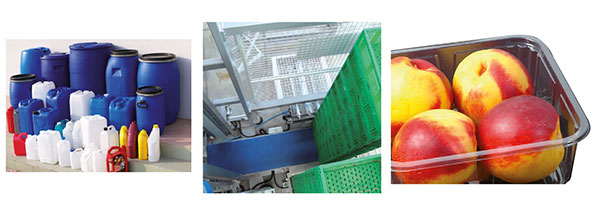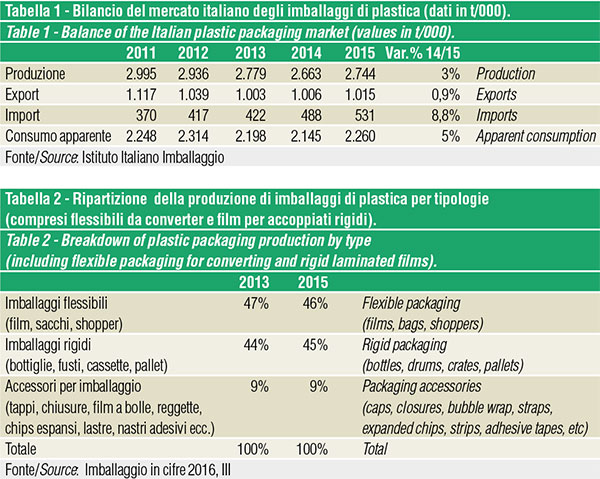Plastic packaging – Data 2015
Production growth trend and market positioning.
A cura di Plinio Iascone

The plastic packaging industry has the peculiarity of including packaging types with the same function but differeng chemical and physical characteristics, conferring widely diverging properties. This is one of the major strengths of this category of containers, which has facilitated its use in nearly all industrial sectors. Plastic packaging represents 18% of total packaging production. However, it is important to note that all values expressed here are in tonnes, and that plastic packaging falls under the category “light packaging”, with much lower weights than other materials.
A very approximate estimate that takes into account the effective proportion of use of this packaging type would therefore place it somewhere around 23-25% of the packaging sector.

The market
The situation in 2015 involved an improvement following a decline in production during the three-year period 2012-2014.
In particular, between 2012 and 2013, the drop in production was mainly driven by the economic crisis, while in 2014, the drop may be attributable to the reduction in average weight of the packaging itself: indeed, during the same period, production in terms of turnover grew by 2.5%.
Specifically, 2015 saw +3% production in tonnes compared to 2014 (table 1).
Foreign trade also grew: exports by +0.9% and imports (which have been on the rise since 2012) by +8.8%.
Apparent consumption (which does not take into account stock shipping) grew by 5%.
In recent years, the use of virgin plastic has slowly but gradually declined, while recycled plastic and bioplastic has gained ground progressively. The latter types are used mostly for producing shoppers and wrapping paper, reaching approximately 30,000 tonnes.
Types
Plastic packaging, which is used in both the food and non-food sectors, can be subdivided into three macro-areas:
- flexible packaging (stretch films for wrapping and packaging, heatshrink films, bags), which in 2015 grew by 2.4% at 1,425 tonnes/000;
- rigid packaging (bottles, drums, boxes, pallets), which have seen the most consistent growth in 2015, 3.7% or approximately 1,402 t/000;
- accessories (straps, caps and closures, various protective elements such as bubble wrap and chips, strips, adhesives, etc.), which grew by 2.2% to reach 276 t/000 (table 2).
Plastic packaging offers countless applications in the various food sectors (fresh and preserved), beverages, technical products, machinery, etc.)
The food sector remains the primary user, with a share of 76.7% (57.3% food, 19.4% beverages).
Another important area of use is that of chemical products (inks, paints, lubricants, etc.), which account for 6.7%. Cosmetics and perfumes represent 3.9% of plastic packaging use.

12.7% of plastic packaging is used for industrial components, for shipping items such as mechanical and electromechanical machinery, textiles, etc. (table 3).
Plinio Iascone
Istituto Italiano Imballaggio

















